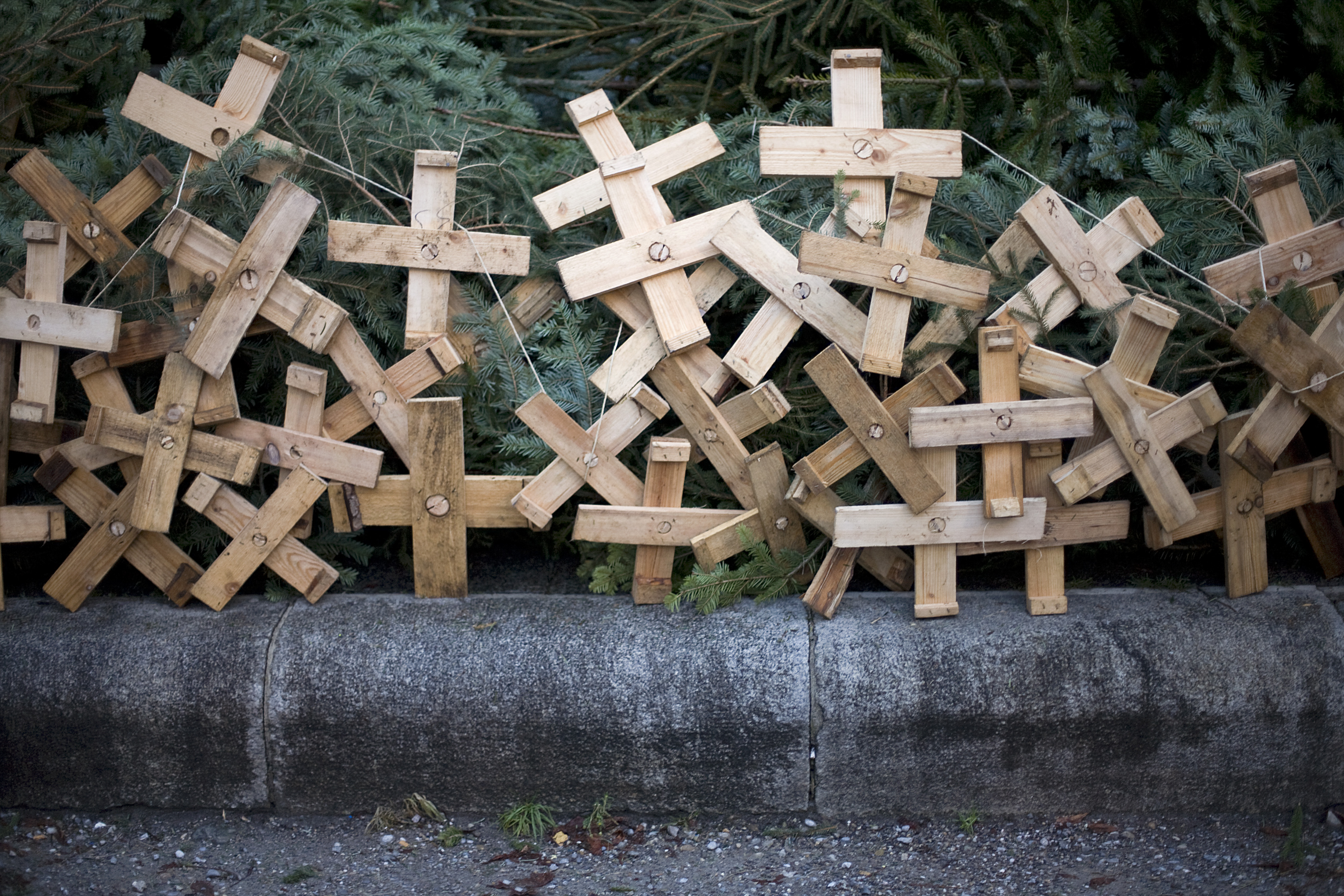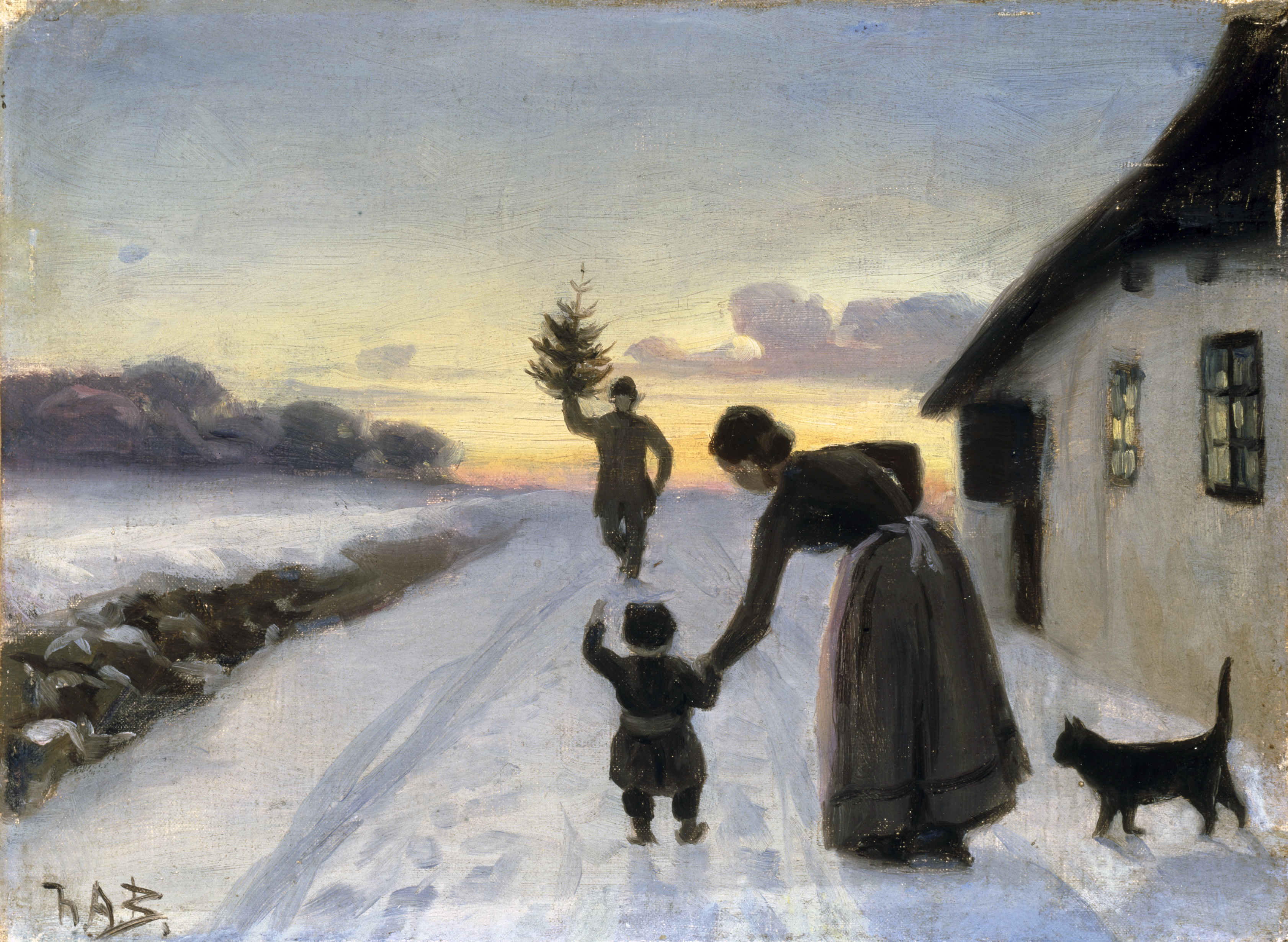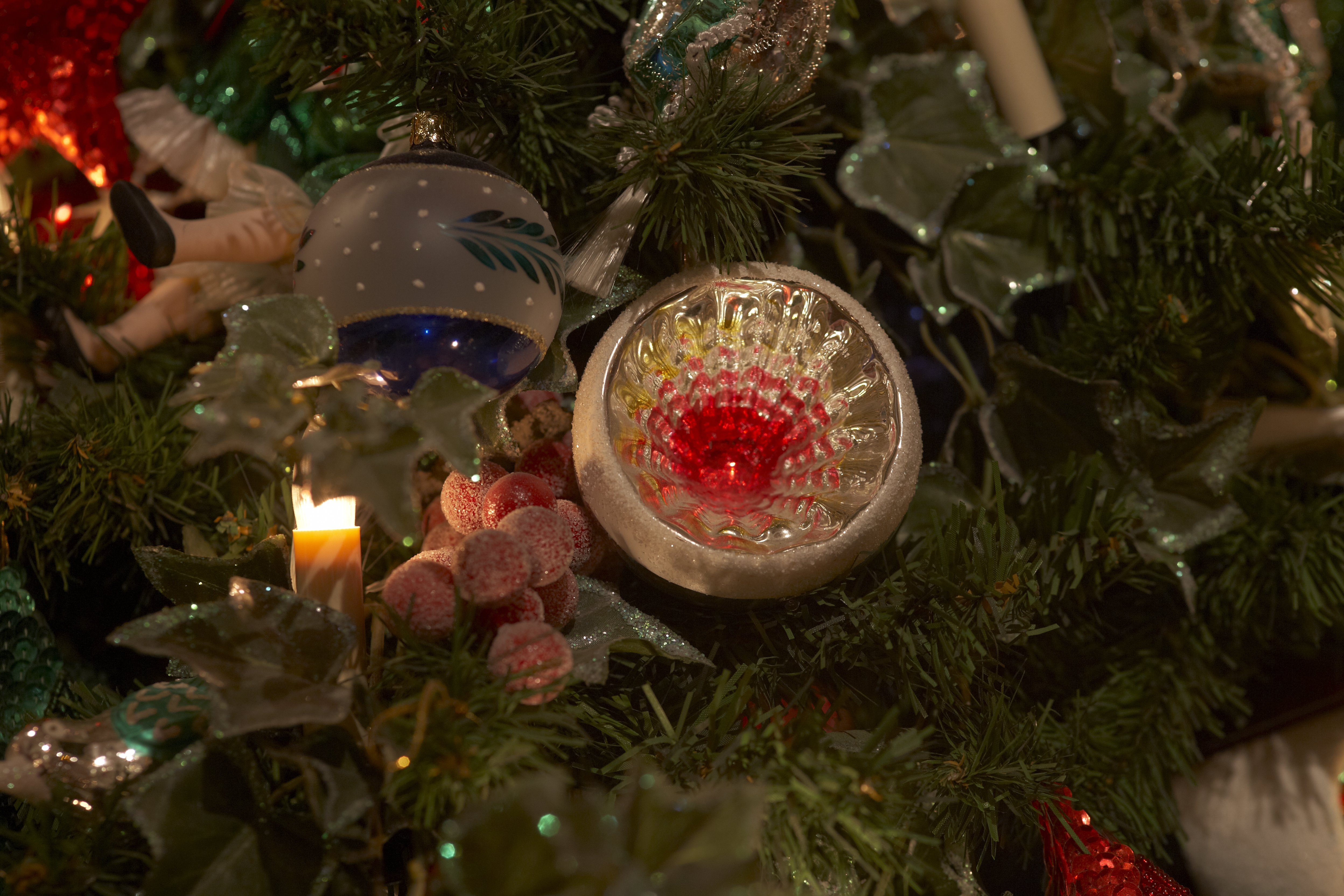Christmas past bows to Christmas present

Feasting and gift-giving, lighting candles and general revelry: celebrations in late December were described by the Latin poet Catullus as "the best of days". But he didn't mean Christmas: he was talking of the Roman festival of Saturnalia.
The Christian church soon hijacked the mid-winter custom, and declared it the time to mark the birth of Christ. For many grandparents and parents nowadays it is also a chance to pass on to their children the pleasures they experienced when they were small.
But in actual fact, how traditional is the way we celebrate Christmas today?
Johann “Father Christmas” Wanner, whose shop in Basel sells Christmas decorations all over the world, has a neat definition: “Tradition is always what you had when you were a child.”
So swissinfo.ch asked over 70-year-olds visiting the Basel Christmas market whether the holiday had changed since they were children.
“We didn’t have so much money. At Christmas we usually got useful presents – and something sweet as well,” said one man from the central Swiss village of Altdorf. “Socks, shirts, perhaps gloves.”
A woman on her way to a concert commented that 80 years ago it was quite different: “We knitted lots of things and embroidered things, and we learnt poems and recited them.”
A visitor from Chur, in the south east, was philosophical. “The Christmas markets are very nice, the atmosphere is lovely, but what I don’t like is seeing Christmas things in the shops at the end of September. It makes me feel a bit sad. But times have changed. And I don’t have to go.”
Christmas commemorates the birth of Jesus, and an important feast in the Christian calendar. However, it is not even known in which precise year Jesus was born, let alone the date.
By the 4th century the date of December 25 had been adopted by the western Christian church.
This is very close to the winter solstice in the northern hemisphere – the shortest day of the year – which had long been a pagan festival. The church was in general keen to and divert pagan festivals to Christian ends.
The eastern churches originally celebrated Christmas on January 6, but later moved to conform to the western date. Only the Armenian Apostolic church retained January 6.
Many eastern Orthodox churches kept the old Julian calendar when western Europe gradually adopted the more accurate Gregorian calendar from the 16th century onwards.
Over the centuries, the difference between the two has increased: the Julian calendar is now 13 days behind. As a result, most Orthodox churches are out of step with western Christendom: Christmas 2012 falls on what the secular world regards as January 7, 2013.
The Greek Orthodox church is an exception: it celebrates on the same day as the western churches: December 25.
The Jerusalem patriarchate of the Armenian church has retained not only January 6 but also the Julian calendar: it will celebrate Christmas 2012 on January 19, 2013.
God and mammon
Basel’s Christmas market is a major tourist attraction, and part of the city’s image. Towns and villages all over Switzerland have their own markets, albeit on a smaller scale. The idea – like so many Swiss Christmas traditions – came from Germany: the world’s oldest Christmas market is in Dresden. It dates back to 1434, and was initially where people bought their Christmas meat.
But in Switzerland the tradition is rather more recent – in most cases not much more than ten years old.
The small town of Einsiedeln has one of the biggest markets in central Switzerland, with 70,000-80,000 visitors in the space of a week, according to organiser Josef Birchler. It started with a few stalls along the main street, then switched to the huge square outside the monastery. In 2001 it was expanded to the whole village.
Buyers and sellers now come from Switzerland and abroad – Italy, Germany and Austria. The rule is that all the stands have to have some kind of connection to Christmas.
Einsiedeln is famous for its monastery, and that is what draws the crowds, Birchler told swissinfo.ch. He sees no contradiction between the commercialism of the market, and the religious aspect of Christmas. “After all, you can’t live from religion alone nowadays,” he laughed.
The events associated with the Einsiedeln market include the old religious tradition of “sending out St Nicholas”: Nicholas figures are blessed before being sent out to visit the children.
“It’s good for the church too, because people go to church for the ceremony,” Birchler said.

More
Christmas through artists’ eyes
Reward and punishment
St Nicholas, whose day falls on December 6, is the Christian saint most closely associated with gifts: from the 11th century onwards he brought presents to diligent children – but naughty ones got a taste of the rod.
While he is still venerated in Roman Catholic areas, in the early 16th century he was replaced in Protestant parts of the country by the Christkind, or Christ child who brought gifts on December 24.
The idea of reward and punishment was still strong at that point, but gradually gave way to a more consumerist attitude.
“The middle-class family became more important in the 19th century, and greater prosperity was part of that,” explained Denise Rudin of Basel’s Museum der Kulturen, which currently has an exhibition about gift giving.
“They used Christmas as an occasion to celebrate their way of life, and to celebrate the family in the context of a religious festival.”
Commercialisation
Consumerism is nothing new. The first ever Christmas gift catalogue, containing 1,111 items, appeared back in 1803 – again it was a German idea.
A popular German song, written in 1886, lists the exciting presents children get given at Christmas – including a rocking horse, doll’s house and other wooden and tin toys – with no mention of the religious meaning of Christmas. It simply tells children to be grateful to their “kind parents”, who have been preparing “for a long, long time” to ensure the day is full of joy.
In contrast to the modest gifts recalled by the elderly visitors to the Basel market, the trend towards ever increasing spending has continued, said Rudin.
“Christmas is the time of year when shops and manufacturers do the most business. Every year lots of new things are invented just to boost turnover. Many people want electronic items. That’s a move away from basic needs and modest luxuries towards very big luxuries, I would say.”
“Gifts are getting more and more expensive. The result is that Christmas is the time of year when the most people get deep into debt.”
But shop owner Wanner sees this consumerism differently: a lot of businesses depend on Christmas for much of their annual profit, he notes.
Smell of peanuts and candles
Many of the older people who spoke to swissinfo.ch stressed the importance of Christmas as a family feast, and hoped to pass on the same enjoyment to their grandchildren.
But here too, Wanner – born in 1939 – has a different gloss.
“When I was young it was a family festival: people stayed at home, behind locked windows and doors. Now Christmas is open. The restaurants are open, you can go out. So many of the problems that used to occur – maybe family members who didn’t speak to each other but had to stay at home and sit at the same table and couldn’t escape – don’t arise nowadays.”
Not that he doesn’t have happy memories of his own childhood Christmases.
“I have baubles that I’ve had for more than 60 years, the first ones I made in kindergarten. They start to speak to you. They show you how you lived 50, 40, 30, 20 years ago.”
“I remember the smell of the apples caramelising in the oven and the smell of peanuts and candles. I would say I still live on this children’s island.”
The Swiss are planning to spend SFr 611 ($660) on average on Christmas presents in 2012 according to a survey by the Institute of Retail Management at St Gallen University.
This is slightly up on 2011, when people said they would spend SFr587. The older the customer, the more they planned to spend.
As for the gifts people want to receive, clothes and shoes topped the list, with travel and books in second and third place.
Only 7% of those asked said they didn’t know what they wanted.
The most popular place to buy gifts is in city centres, followed by shopping centres.
Internet purchasing is less popular than in 2011: only just over 25% said they would buy online, whereas in 2011 it was nearly 40%.
A third of those surveyed said they would buy at least some of their presents abroad.
The survey was carried out among about 2,000 shoppers in pedestrian areas in German and French-speaking Switzerland.

In compliance with the JTI standards
More: SWI swissinfo.ch certified by the Journalism Trust Initiative


You can find an overview of ongoing debates with our journalists here. Please join us!
If you want to start a conversation about a topic raised in this article or want to report factual errors, email us at english@swissinfo.ch.